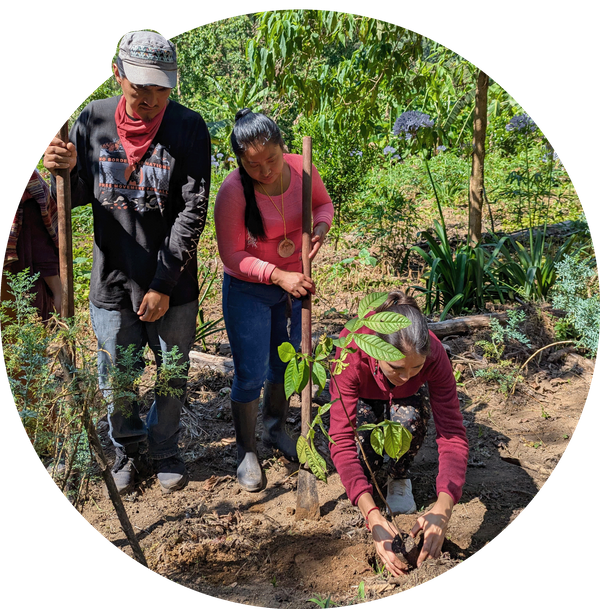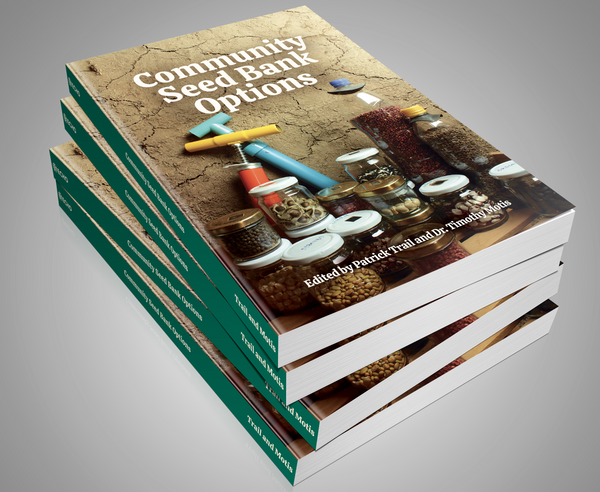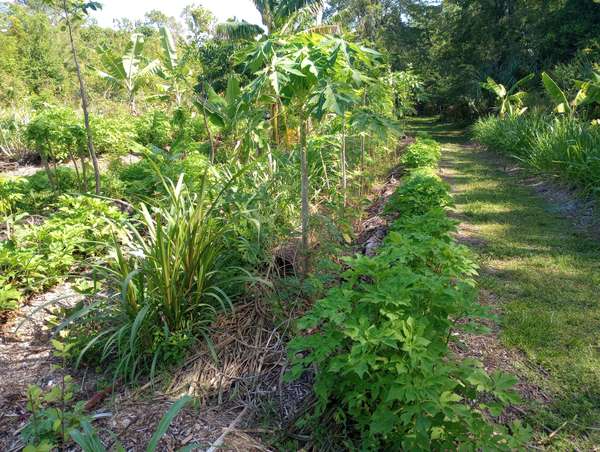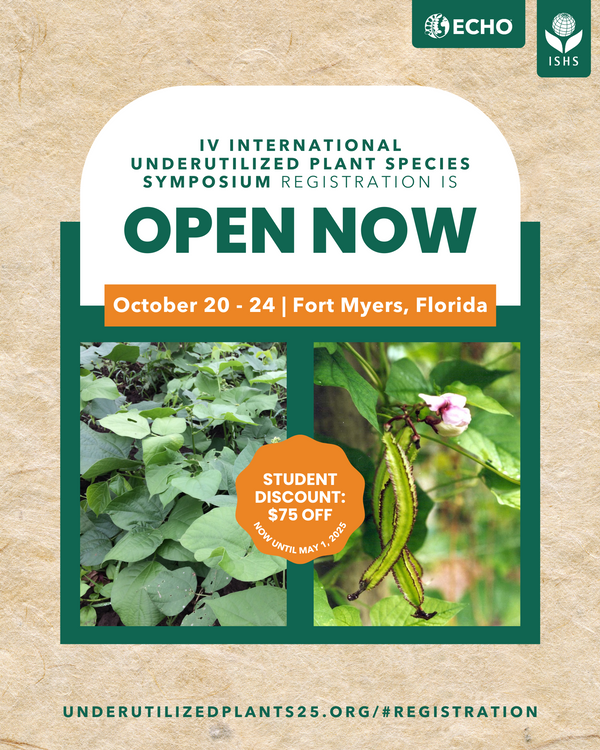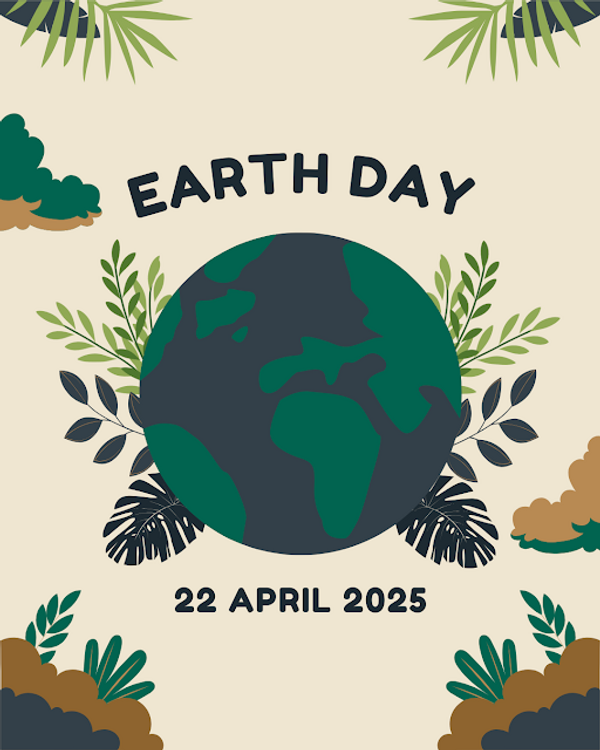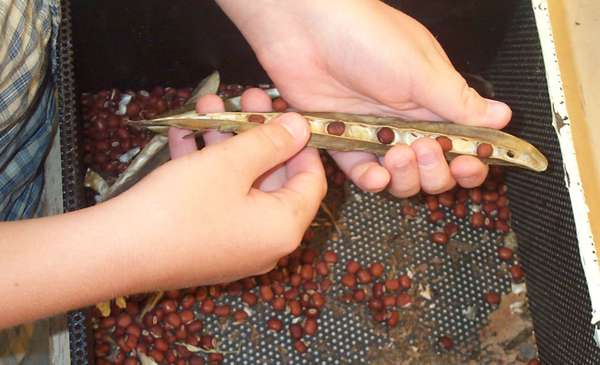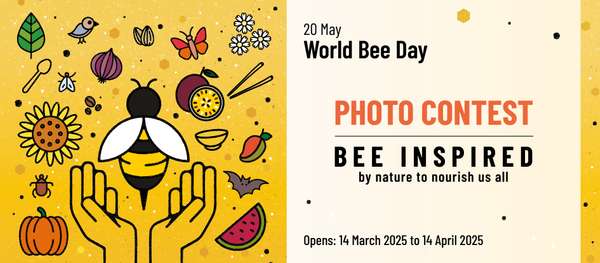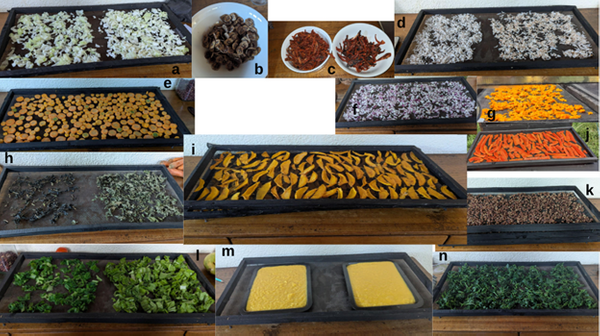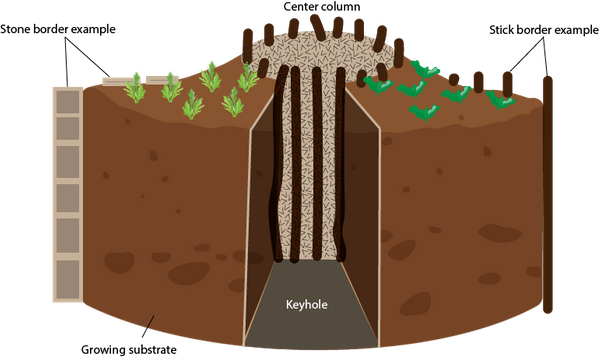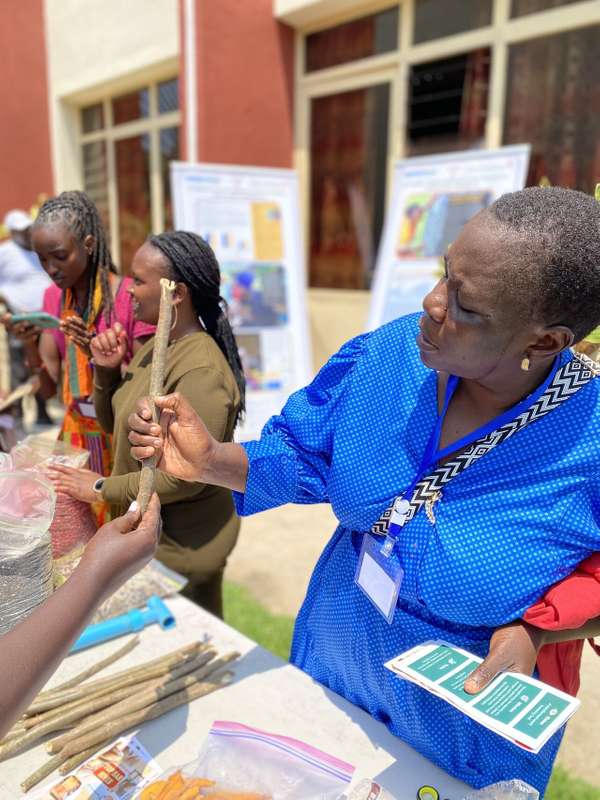ECHOcommunity Actualizaciones
Encuentros Nacionales - Centroamérica 2025-05-16
Estamos muy felices de anunciarles que en el marco del actual proceso de implementación de nuestro Centro de Impacto Regional de ECHO en Centroamérica y el Caribe, tenemos programado realizar encuentros nacionales en Honduras, Guatemala y Nicaragua, con el objetivo de intercambiar información y establecer un dialogo con ustedes a fin de construir una agenda participativa de trabajo y capacitaciones. Te Los encuentros están programados para las siguientes fechas:
- Honduras - 27 de mayo en Tegucigalpa, en las oficinas de ANAFAE (Colonia Miraflores)
- Guatemala - 4 de junio en Cobán en el Centro de Formación y Capacitación Noj y 10 de junio en Ciudad de Guatemala en las oficinas centrales de Casa del Alfarero.
- Nicaragua - 17 y 18 de junio en Matagalpa, en Rayo de Sol.
New ECHO Book Release: Community Seed Bank Options 2025-05-06
Community Seed Bank Options
edited by Patrick Trail and Timothy Motis
Buy now as an eBook or paperback
"Community Seed Bank Options is a practical, comprehensive guide to the hands-on management of community seed banks. It features illustrative examples and proven methods to walk readers through each step while clearly explaining the science and biology behind seed saving. This book is an essential resource for anyone immersed in food sovereignty, seed stewardship or community-led development. Congratulations to the ECHO team for delivering such a valuable and accessible toolkit."
Ellie Lovett, Director of Project Morro
Community Seed Bank Options is the compilation of many individual research experiments, papers, ideas, technologies, and experiences offered over several years by individuals working to further best practices in community seed banking, seed saving, and genetic preservation.
While ECHO has collected and validated these best practices over many years, ECHO does not take credit for each individual innovation, as many come from network members (maybe even you!). The book features images and graphics that explain, illustrate, and simplify much of the information.
Upcoming July TAD Trainings - Bundle & Save! Early Bird Ends Soon! 2025-04-29
We have two Tropical Agriculture Development trainings coming up in July at ECHO North America!
July 7-11 : Introduction to Tropical Agriculture Development
This is a 5-day course with a variety of topics that focus on improved food security and agricultural livelihoods for small-scale farmers. For more information and to register click the link below:
July 15-18: TAD II - Syntropic Agroforestry
This is an interactive 4-day agroforestry training session. Learn how to cultivate abundant food and timber in a system that mimics a natural forest. This course will cover the principles and practices needed for a beginner to plant his/her own agroforest. For more information and to register for this course click the link below:
Bundle & Save!!
You can register for both trainings and stay at ECHO for two weeks at a discounted rate! Use the link below to register for both traings. If you register before May 7th you will get an additional discount with our Early Bird price!
Early Bird Ends Soon! Register soon and Save! 2025-04-23
IV International Symposium on Underutilized Plant Species
Fort Myers, FL | October 2025
Did you know you can save on registration costs for the upcoming ISHS Symposium if you do so early? You receive $75 off with our early bird discount! Don't miss out on a chance to save! Register for this international event today. If you are currently enrolled in a program of study, you are eligible for our student registration rate.
ECHO Celebrates Earth Day 2025! 2025-04-22
Earth connects us—to our Creator, to ourselves, to our food, and to one another. As vast and complex as creation is, we’ve only begun to understand its depth. This mystery invites awe, care, and wonder—especially for those of us learning to steward it well. Thank you for being a vital person in the ECHO Community who cares for the Earth in a unique way!
IFOAM International Day of Seeds Webinar: Our Seeds, Our Future April 23rd 2025-04-15
Protecting Biodiversity and Farmers' Rights
Seed production is vital to the soverignty and vitality of the smallholder farmer and communities.
"To mark the International Day of Seeds, IFOAM is bringing together a panel of global experts for an insightful discussion on protecting seed sovereignty, resisting corporate influence, and strengthening farmers’ rights. From grassroots movements to innovative seed networks, speakers will share strategies to ensure a future where farmers, breeders, and communities thrive."
The webinar will be recorded so that those who wish to, can watch it at a more convenient time.
FAO World Bee Day 2025 Photo Contest ends April 14th! 2025-04-08
Capture the magic of bees and other pollinators as they keep our ecosystems thriving! This is your chance to showcase the beauty and vital role of bees and other pollinators in nature, agriculture, and sustainability.
📅 Submission deadline: 14 April 2025
📅 Winners announced: 20 May 2025
🏆 Prizes & Recognition:
- Top 3 photos featured on FAO’s official social media
- Pictures displayed at the 2nd International Forum for Action on Sustainable Beekeeping and Pollination in Ethiopia
- Certificate of recognition & exclusive FAO merchandise
🌍 How to Enter:
- Capture a photo that embodies the theme: "Bee Inspired by Nature to Nourish Us All" · Complete the online entry form with a description of your photo
EDN Número 169 Disponible Ahora 2025-04-01
Temas de Relieve
- Secadores solares: directos Una opción sencilla y barata para el secado solar de alimentos
- Ecos de nuestra red: Aguacate injertado en el terreno y Zanjas fertilizadoras con pasto elefante y/o bananos
- Del Banco de Semillas de ECHO: Frijol mariposa o polilla (Vigna aconitifolia), una leguminosa multipropósito para climas áridoss
- Libros, Sitios Web y Otros Recursos: Lanzamiento de nuevo libro - Opciones para bancos de semillas comunitarios
Secadores solares directos
Una opción sencilla y barata para el secado solar de alimentos
James Dontje
Extracto:
Hemos secado bien una variedad de frutas y verduras con este secador, utilizando termómetros, balanzas para alimentos y sensores de humedad relativa pequeños para “calibrar” el secado de manera que se puedan utilizar señales visuales y de textura simples que nos indiquen cuándo los alimentos están lo suficientemente secos para almacenarlos. Se han hecho muchas pruebas con rodajas de mango -son más difíciles de secar lo suficiente en un ambiente húmedo y si podemos secarlas bien (y lo hemos hecho), creemos que podemos secar casi cualquier otro alimento.
NEW Technical Note # 103 Tire, Sack, and Keyhole Gardens 2025-03-25
Home gardens are typically small growing areas near the homestead that contain crops of specific importance to the family. Home gardens offer quick access to herbs, fruits, and vegetables that help boost household nutrition. This article will detail step-by-step instructions for how to make a tire garden, sack garden, and keyhole garden. One key advantage of contained gardens like the tire, sack, wicking, keyhole, and 100-fold gardens is that you select the substrate for the growing space when you build it and, therefore, can start with fertile soil. You can use compost, aged manure, or other growing mediums well suited to crop growth. The main limitation of these gardens is that the substrate dries quickly and requires frequent watering (daily or every two days).
ECHO East Africa Burundi Symposium 2025-03-18
The 8th ECHO East Africa Biannual symposium in collaboration with HOPE International Burundi was held at the end of February, 2025. The symposium had 30 presenters and 130 participants from 14 countries across continents. Participants shared and encouraged one another in areas of sustainable agricultural practices, agroecology, farming systems, and more!
Don't miss the next ECHO East Africa event this July
